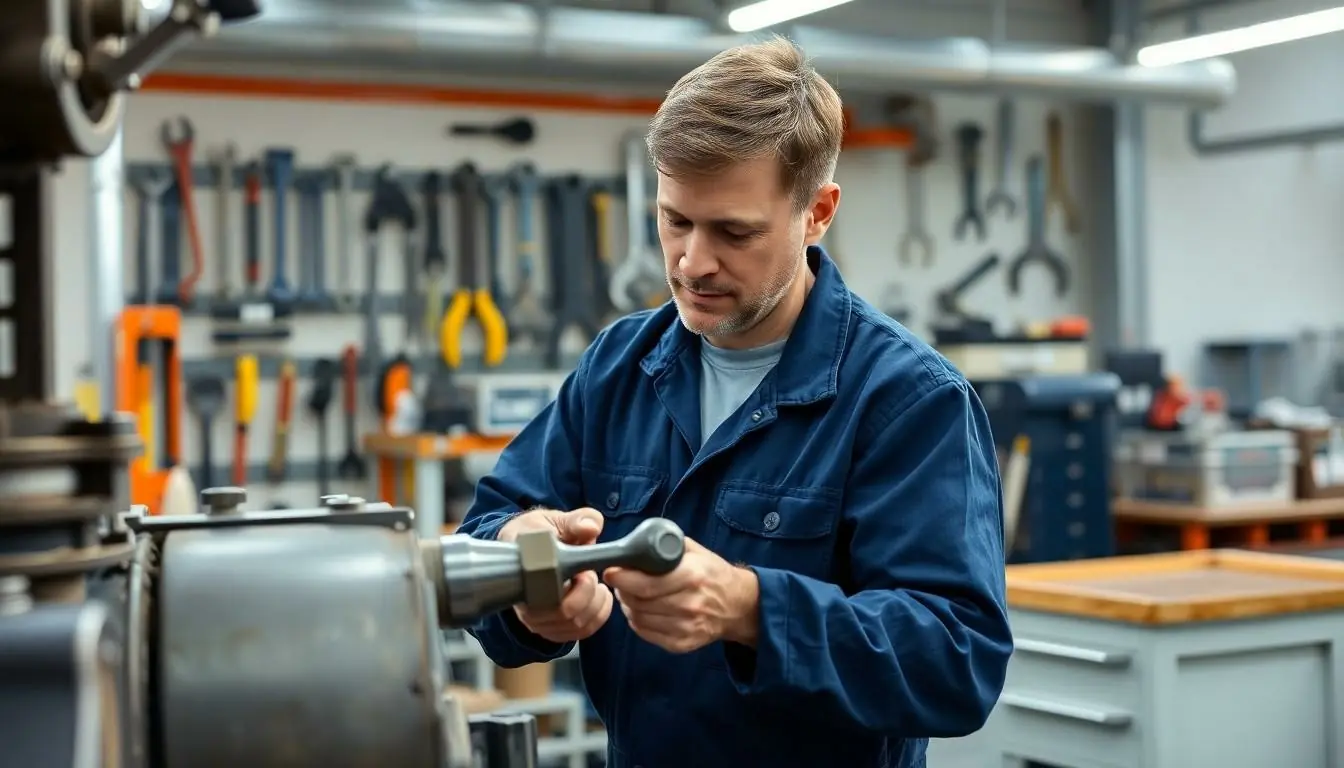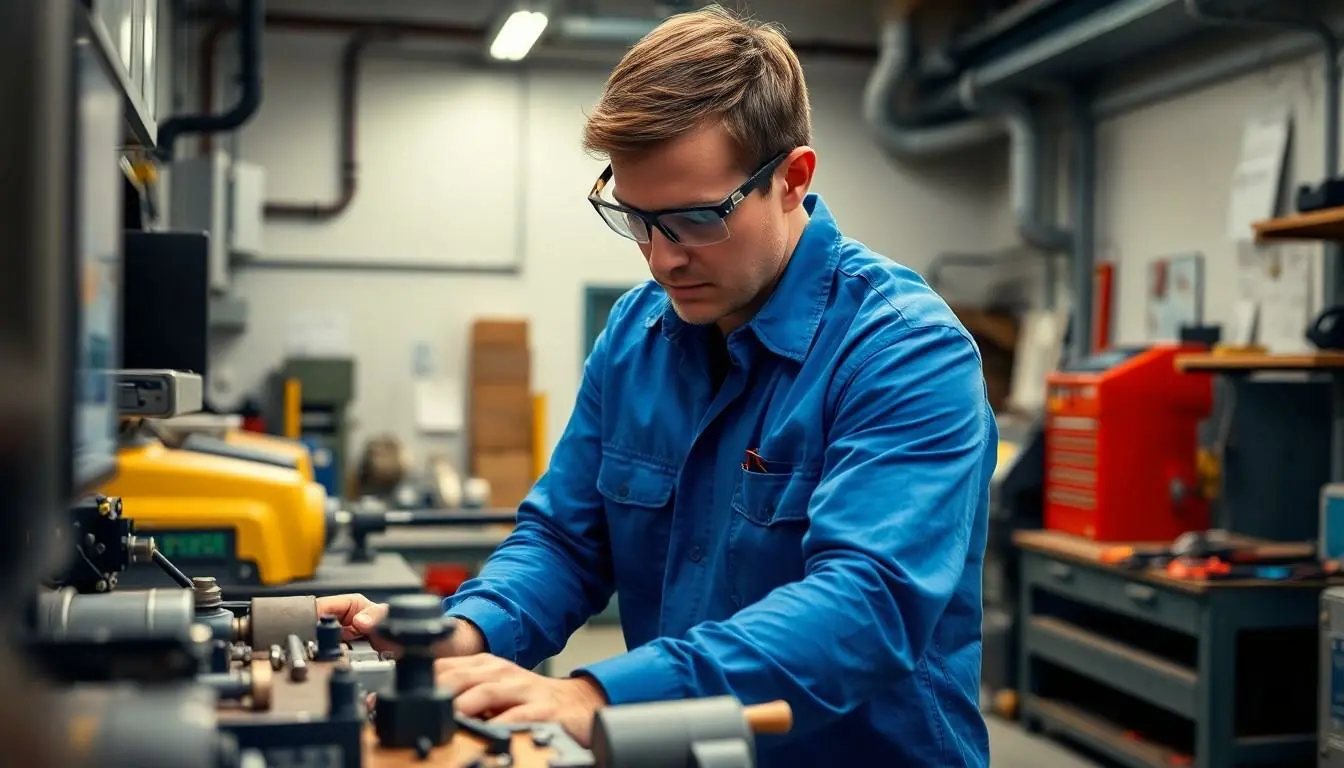Table of Contents
ToggleIn the world of keeping things running smoothly, two terms often steal the spotlight: maintenance and repair. While they may sound like distant cousins at a family reunion, they couldn’t be more different. Maintenance is like that diligent gym buddy who keeps you in shape, while repair is the heroic friend who swoops in when you’ve eaten one too many donuts.
Understanding Maintenance Vs Repair
Maintenance and repair serve distinct yet crucial roles in preserving the functionality of equipment or systems.
Definition of Maintenance
Maintenance involves proactive actions taken to uphold the good condition of assets. Regular checks and scheduled services prevent deterioration. Often, maintenance includes cleaning, lubrication, and adjustments that enhance performance. Organizations implement maintenance to optimize equipment lifespan and reduce costly downtimes. For example, routine oil changes in vehicles prevent engine wear, ensuring ongoing reliability.
Definition of Repair
Repair addresses failures or breakdowns that occur despite preventive measures. It consists of corrective actions aimed at restoring functionality after an issue arises. Common repair activities include replacing damaged parts or fixing malfunctions. An example includes replacing a broken air conditioner compressor to restore cooling. Repair actions are typically unplanned and can incur significant costs if not managed promptly. Therefore, understanding both concepts is vital for effective asset management.
Importance of Maintenance

Maintenance plays a crucial role in ensuring the longevity and efficiency of equipment. Regular upkeep prevents issues before they occur, resulting in smoother operations.
Preventative Benefits
Preventing problems through maintenance enhances reliability across equipment. Routine inspections identify potential issues, allowing for early interventions. Scheduled lubrication practices reduce wear and tear. Cleaning helps maintain optimal performance levels, ensuring systems operate efficiently. Regular adjustments preserve accuracy in machinery, promoting consistent output. Employees experience decreased disruptions when equipment runs without unexpected failures. Safety improves since well-maintained equipment minimizes risks of accidents. Regular maintenance activities contribute to increased productivity, allowing businesses to operate with confidence.
Cost-Efficiency
Investing in maintenance often results in significant cost savings. Preventing major breakdowns minimizes repair expenses and extends equipment life spans. Budgeting for routine maintenance reduces the need for emergency repairs, which can be expensive. Companies benefit from reduced downtime, ensuring workspaces remain productive. Efficient equipment consumes less energy, leading to lower utility bills. Overall, allocating resources to maintenance creates a more cost-effective operational strategy. Long-term savings frequently outweigh initial maintenance costs, demonstrating the financial benefits of proactive upkeep.
Importance of Repair
Repair plays a crucial role in maintaining functionality and efficiency in various systems. When equipment breaks down, timely repairs prevent further complications.
Immediate Solutions
Immediate solutions are essential during breakdown situations. They address the malfunctioning equipment quickly. Repairs restore functionality, minimizing downtime and disruption. Technicians identify issues such as faulty components or system failures. Depending on the severity, they may replace parts or fix underlying issues. Quick actions often restore equipment performance, allowing operations to resume smoothly.
Long-Term Implications
Long-term implications of neglecting repairs can be significant. Continuous use of malfunctioning equipment can lead to more extensive damage and higher repair costs. Over time, repeated breakdowns affect productivity and increase operational expenses. Furthermore, delays in repairs diminish equipment lifespan. Prioritizing timely repairs enhances reliability, optimizing overall performance. Ignoring repairs encourages ongoing issues and potentially jeopardizes safety. Long-term strategies must include regular assessments to catch problems early, ensuring efficient operations and safeguarding investments.
Key Differences Between Maintenance and Repair
Understanding the distinctions between maintenance and repair clarifies their unique roles in asset management.
Approach and Strategy
Maintenance focuses on proactive actions that enhance overall equipment performance. Regular inspections, cleaning, and lubrication form the core of a maintenance strategy. These efforts prevent deterioration and reduce the risk of unexpected failures. Repair centers on addressing breakdowns that occur despite preventive measures. Technicians use corrective actions to restore functionality. Each approach requires different strategies; maintenance emphasizes consistency while repair emphasizes immediacy.
Time and Resources
Time investment differs significantly between maintenance and repair. Scheduled maintenance involves consistent, planned efforts to keep equipment in prime condition. These activities, while requiring resources, lead to greater efficiencies over time. Conversely, repairs demand immediate action following a breakdown, often leading to unplanned expenditure. Delaying repairs can escalate costs and extend downtime, emphasizing the need for timely intervention. Allocating resources wisely between both strategies enhances operational longevity and performance.
Balancing maintenance and repair is crucial for optimal asset management. Proactive maintenance not only extends equipment life but also enhances efficiency and safety. On the other hand, timely repairs are essential for addressing unexpected breakdowns and preventing further complications. By understanding the distinct roles of both strategies, organizations can make informed decisions that lead to cost savings and improved operational performance. Prioritizing regular maintenance while ensuring prompt repairs creates a resilient system that minimizes downtime and maximizes productivity. This approach ultimately safeguards investments and supports long-term success.






